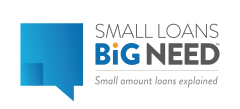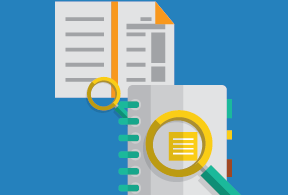
SO WHAT EXACTLY IS A SMALL AMOUNT LOAN?
- Small Amount Credit Contracts (SACCs, or small loans) are loans to consumers payable between 16 days to 1 year.
- Fees are capped at a maximum of 20% to establish the loan and 4% per month. This means, if a small loan of $1,000 is repaid within 4 months with no defaults, it will only cost $360 with a total amount repaid of $1,360.
- The maximum loan amount that can be borrowed by a consumer for a SACC is $2,000.
- SACC loans are unsecured, which means borrowers don’t have to pledge any asset such as a vehicle to take out the loan.
- A small loan is designed as a convenient and economical solution to meet temporary cash flow problems, but may not always be suitable for long-term or continuing financial needs.
- Loans are often approved within 24 hours so they can be a good source if borrowers need money quickly.
- A borrower who does not pay their loan on time, cannot be charged more than the original borrowed amount in fees and charges. A $1,000 loan will never cost more than $1,000 which means total repayments will only ever be $2,000. This is called a ‘debt-spiral cap’ and is an important protection for SACC borrowers.
SACCs Vs ADIs
SACCs Vs MACCs
Responsible lending, responsible borrowing
A lender must apply a test called a ‘rebuttable presumption’ in situations where an applicant has had two or more small loans in the previous 90 days or if the applicant is in default under another SACC loan.
There is an onus on lenders to ensure responsible lending practices, which is enforced through government legislation.
An applicant must also practise responsible borrowing – they must be truthful in what they tell the lender.
THE STATS: THE BIG NEED FOR SMALL LOANS IN 2014-15
In November 2013, NCPA engaged an independent research firm, CoreData, to undertake a two-year data research project into the small and medium amount loans industry – the single largest research project since legislation changes came into effect in 2013. Here are some of the key findings from that report.
SACCs applications that are approved
SACCs entered into are by consumers whose main source of income is employment
SACCs entered into by consumers receiving more than half their income from government benefits
new SACCs entered into where a customer had an existing SACC
percentage of SACCs repayments that were successfully met
4 in 10,000
number of all loan contracts referred to consumer advocate groups
3 million
or 16.9% of the adult population in Australia are either fully excluded or severely excluded from financial services in Australia*
Stats from CoreData, 2015 Consumer Credit Industry Report
*2014 The Centre for Social Impact report Measuring Financial Exclusion in Australia
UNCOVER THE MYTHS AND FACTS SURROUNDING SMALL AMOUNT LOANS
Myth
An ‘Annual Percentage Rate’ can be used to calculate the cost of repaying a small loan
Annual Percentage Rates have NEVER indicated the cost of a loan repaid in under 12 months because small amount loans are not designed for long-term use. Would you borrow money at a 365% annual interest rate? Of course not! But what if you needed $100 today, with a full repayment of $101 tomorrow? That’s only 1% interest but expressed as an APR – well, that’s 365%. That’s why reports of high rates of interest are so misleading.
Fact
All fees on small loans are capped
Fees are capped at a maximum of 20% to establish the loan and 4% per month. This means, if a small loan of $1,000 is repaid within 4 months (the average) with no defaults, it will only cost $360 with a total amount repaid of $1,360.
Myth
Small amount loans is just another term for payday loans
‘Payday loans’ – where lenders provided short term cash which was then paid back in full, with interest, on your next pay day – no longer exist. They were abolished by the federal government in March 2013.
Fact
Small amount loans are safe, responsible and highly regulated
The Commonwealth Treasury designed and implemented a safe and legitimate consumer credit product called “Small Amount Credit Contracts” to replace payday loans and reduce the impact of Financial Exclusion where consumers are unable to access credit through credit cards or other bank credit products.
Myth
People can just keep applying for small loans and get sucked into a debt spiral
Not true. Individual loans have a debt spiral cap. Multiple or successive SACC loans have many regulatory safeguards in place where an individual is protected from debt spiral.
Fact
There are special laws for an individual having two or more SACCs in 90 days
A lender must apply a test called a ‘rebuttable presumption’ in situations where an applicant has had two or more small loans in the previous 90 days or if the applicant is in default under another SACC loan. Under the rebuttable presumption test, the lender may find that a small loan is unsuitable for the applicant or that the applicant does have the ability to repay the loan. A rebuttable presumption means the lender must be extra careful to assess if the applicant can afford a loan under certain circumstances without causing hardship.
Myth
It’s obviously not a responsible industry because there are still so many negative media reports and ASIC investigations about the product
Almost all negative reports and statistics you read about are related to cases from before the legislation changes in 2013. The media and ASIC are showing signs of laziness when they continue to use the term “payday loans” and quote outdated cases.
Fact
The NCPA and its members work with policy makers, consumers and ASIC to build a reputable product
NCPA takes very seriously its role of driving self-regulation of the industry, by assisting and guiding lenders in the provision of fair and safe credit under the National Consumer Credit Protection Act 2009. Most importantly, NCPA strives to promote and protect the rights of customers by ensuring lenders are applying responsible lending practices. NCPA represents organisations that apply responsible lending obligations under their ASIC credit licence and operate within the federal government’s strict legislation and regulations in the SACC industry.
Myth
The industry offers loans with ridiculous and usurious rates of interest
They prey on poor people who are desperate for money and therefore keep taking out multiple loans.
Fact
The industry is highly regulated by government
Since 2013, the Credit Act has placed specific obligations on SACC providers, including a cap on fees and total repayment amounts. There is also a “rebuttable presumption” that a loan is unsuitable where the customer is in default under another SACC loan or has had two other SACC loans within the previous 90 days. All providers of SACCs and MACCs must hold an ASIC Credit License and must show their 6-digit licence number in a very prominent place.
Myth
Most people who take out small loans are very young people or vulnerable people on Centrelink
CoreData research shows this is simply not the case.
Fact
The average customer is employed, male, in his mid-30s
The CoreData research project analysed over 2.4 million SACC contracts from 1 July 2013 to 30 June 2015. This analysis showed an increase in SACCs used by employed consumers from 59.5% to 64.5%. Conversely, SACCs for consumers who relied on government benefits dropped from 40.3% to 35.5% over this two year period.
- NCPA’s diverse membership covers franchisors, franchisees, private and ASX listed companies, independent operators, small and large entities, who offer consumer credit under the National Consumer Credit Protection Act.
- All NCPA members hold the same Australian Credit License as banks for the provision of consumer credit and are also regulated by ASIC.
- Some members provide just one type of loan (usually small amount loans), while some provide a range of loan services and other financial products, such as brokerage for commercial and home loans.
- The best way to ensure that you are dealing with an Australian Credit Licensed lender is to look for the NCPA logo which tells you the lender is a Member of the Association.
- View more Coredata research
- Small loans are a vital service for consumers who can’t access credit from typical avenues.
- The vast majority of small loans are used as a stop-gap for unexpected living expenses and essentials.
- Without access to small amount loans, consumers may seek out illegal options from unlicensed money lenders and become more vulnerable to crime and social issues.
- The real crime would be going without the basics, such as your rent, bills, school fees or food. If small loans didn’t exist some working people would go without.
- Who would you rather have loaning money to high risk consumers – licensed and highly regulated organisations or illegal and unlicensed loan sharks and the black market?
- The weakness of a “SACC database” would be that it is only SACCs which would be disclosed or dealt with in any such database – it would be a meaningless measure or protection, in a sea of many other forms of credit from many providers. As it would need to be live, it would require a database smarter the Comprehensive Credit Reporting database, which has taken years to develop.
- There is a far simpler, user-friendly and cheaper method of achieving almost the same result, for all loan types from all credit providers: introduce a mandatory protocol to use one of the mandatory fields in the ABA file format, which exchanges data between all financial institutions, to embed loan type coding for (SACC, MACC, Home Loan, Personal Loan, etc) information into all bank statements.
- A database would add considerable operating costs for lenders for little additional benefit over current information available, which would need to be passed onto consumers as lenders cannot absorb such a cost and still remain viable.
- The database will not achieve its intended objectives as many rogue operators, who unfortunately do exist, will not participate.

